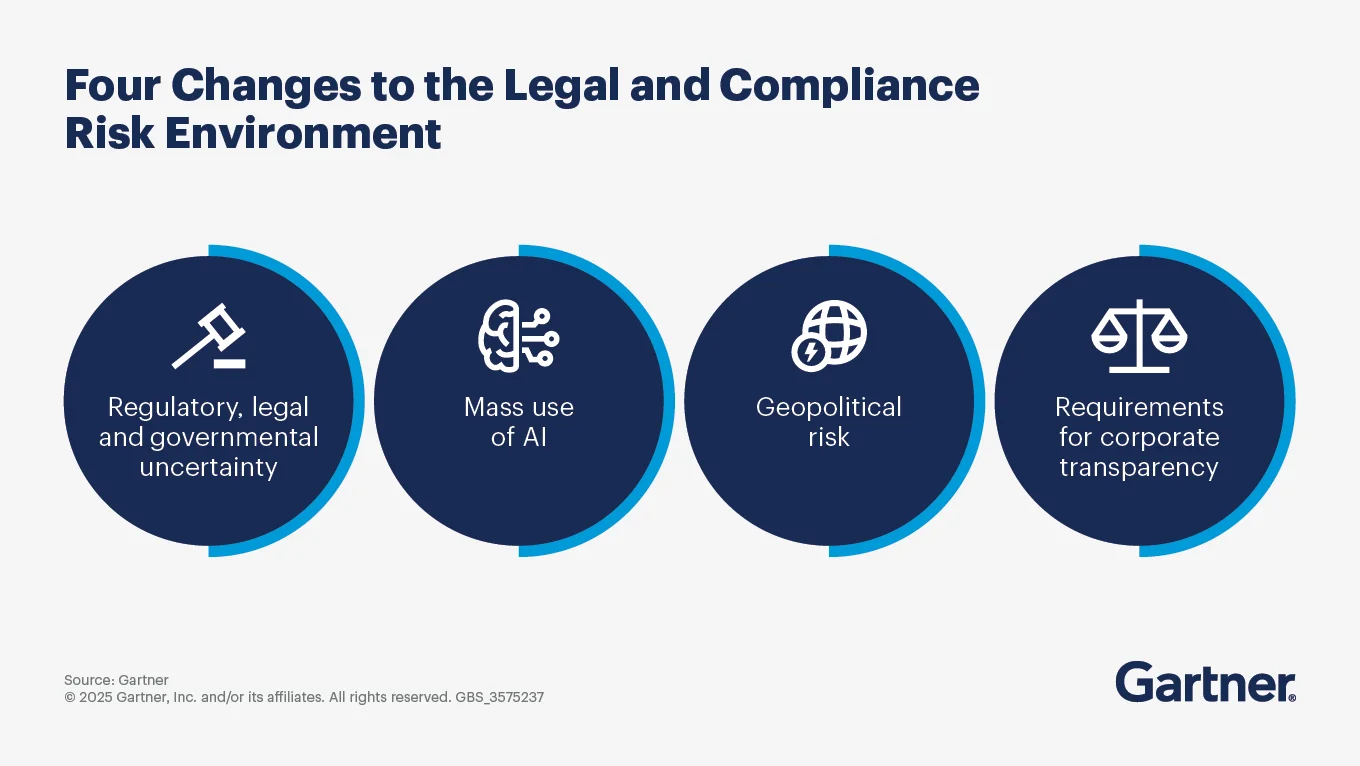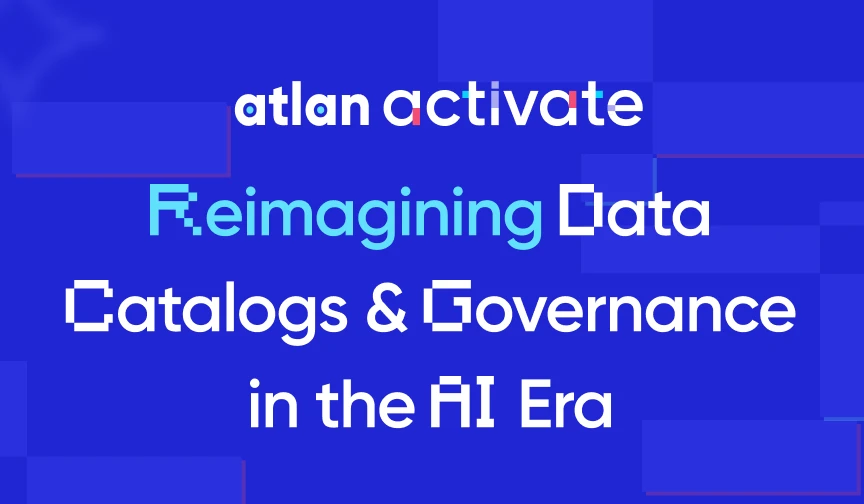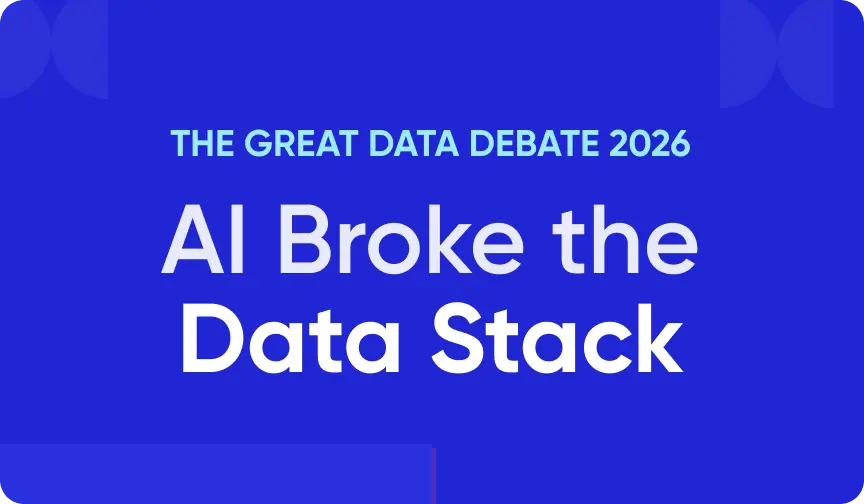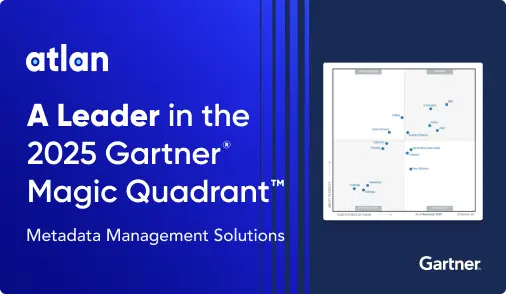What Is Regulatory Reporting Automation? Benefits, Key Aspects & the Role of Metadata

Last Updated on: July 08th, 2025 | 9 min read
Unlock Your Data's Potential With Atlan

Quick Answer: What is regulatory reporting automation?
Permalink to “Quick Answer: What is regulatory reporting automation?”Regulatory reporting automation is the use of technology to streamline, validate, and submit required reports to regulatory authorities. It reduces manual effort by automating data collection, transformation, validation, and submission workflows. This, in turn, helps organizations meet compliance deadlines, minimize errors, and reduce risk.
Modern metadata control planes (like Atlan) integrate directly with your data systems to create an always-audit-ready environment and ensure reporting aligns with regulations such as BCBS 239, Dodd-Frank, EMIR, MiFID II, and more.
Up next, we’ll explore how automated regulatory reporting works, its key components, and how a metadata control plane can support audit-ready, scalable reporting processes.
Table of Contents
Permalink to “Table of Contents”- Regulatory reporting automation explained
- What are the key aspects of regulatory reporting automation?
- What are the prerequisites for regulatory reporting automation?
- What role does a metadata control plane play in regulatory reporting automation?
- How can Atlan help with regulatory reporting automation?
- Final thoughts on regulatory reporting automation
- Regulatory reporting automation: Frequently asked questions (FAQs)
Regulatory reporting automation explained
Permalink to “Regulatory reporting automation explained”Summarize and analyze this article with 👉 🔮 Google AI Mode or 💬 ChatGPT or 🔍 Perplexity or 🤖 Claude or 🐦 Grok (X) .
Regulatory reporting automation uses technology to streamline the preparation and submission of compliance reports to regulatory bodies such as central banks, financial conduct authorities, and industry-specific regulators.
These reports often include financial statements, capital adequacy disclosures, liquidity metrics, and transactional data. As regulations become more complex and reporting volumes increase, automation provides the structure and consistency needed to meet growing demands.
According to FINRA, regulatory reporting automation can support risk-data aggregation, generate key risk metrics, and facilitate the reporting of capital, liquidity, and other compliance-related information.
“For example, to assist with risk-data aggregation or regulatory reporting, a RegTech tool may be deployed to gather and analyze information on capital and liquidity for use in internal models or to report to regulators.” - FINRA on how automation can help with regulatory reporting
Why do you need regulatory reporting automation?
Permalink to “Why do you need regulatory reporting automation?”Historically, regulatory reporting has been a manual, time-intensive process involving the collection of data from siloed systems, formatting it for submission, validating it against internal and external rules, and manually uploading it to regulatory portals.
This space changed as industries like finance, banking, healthcare, insurance, etc., went almost completely digital. As a result, public scrutiny of data practices has intensified, and regulatory complexity has increased with new compliance reporting requirements in cybersecurity, ESG, and more recently, AI.

A rapidly changing and expanding risk environment makes compliance challenging - Source: Gartner.
Compliance teams must now collect and report on new metrics to meet these requirements, however, that information is inconsistently stored across the business and third-party networks.
To overcome such challenges, organizations must adopt tools that can automate core regulatory compliance workflows, track data across systems in a single place, and offer continuous visibility into risk.
Regulatory reporting automation addresses this by:
- Automating data extraction from source systems
- Transforming data to meet regulatory schema and format requirements
- Applying validation rules to ensure accuracy and compliance
- Generating and submitting reports in approved formats (e.g., XBRL, XML)
- Maintaining an audit trail for traceability and compliance reviews
- Building a unified view – a control plane – for compliance monitoring across your data estate
This allows compliance, risk, and data teams to spend less time chasing down errors or reconciling data and more time analyzing risk and preparing for audits.
What are the key aspects of regulatory reporting automation?
Permalink to “What are the key aspects of regulatory reporting automation?”Automating regulatory reporting orchestration across four foundational layers includes the following:
- Data integration across your data estate: Seamlessly connect to internal and external data sources (e.g., core banking systems, CRMs, ERPs, trade repositories).
- Data quality and transformation: Apply validation checks, format transformations, enrichment rules, and normalization to meet regulatory schema requirements.
- Report generation and submission: Automatically generate reports in formats required by different regulators (XML, XBRL, CSV, JSON).
- Audit trails and traceability: Maintain full lineage and logs of how data was transformed and reported. Every report should be traceable back to source data and stakeholder approval.
What are the prerequisites for regulatory reporting automation?
Permalink to “What are the prerequisites for regulatory reporting automation?”Before automating regulatory reporting, it’s critical to understand your organization’s compliance posture and reporting obligations. Start by asking:
- Which regulations apply to your industry (e.g., BCBS 239, MiFID II, EMIR)?
- Which business processes and systems generate reportable data?
- Where is this data stored, and how is it accessed?
- Who is responsible for validating and submitting regulatory reports?
- What internal controls are in place to monitor report quality and accuracy?
- Are consents, disclosures, and third-party dependencies managed properly?
- How is data transmitted to regulators—and in what format (e.g., XBRL, CSV, XML)?
To answer these questions, teams need full visibility into their data architecture, flow of information across systems, and specific reporting requirements by jurisdiction or regulator.
This is where a metadata control plane comes in.
Why metadata matters for regulatory reporting automation
Permalink to “Why metadata matters for regulatory reporting automation”Metadata provides the foundational visibility, ownership, and automation capabilities needed to orchestrate complex reporting workflows and remain audit-ready at all times.
By continuously mapping the flow of data across your systems and embedding governance directly into workflows, a metadata control plane enables:
- Clear ownership of data elements used in reports
- Standardized definitions for consistent usage across teams
- Automated data lineage to trace values from source to submission
- Policy-based controls for masking, access, and validation enforcement
Automation without governance only speeds up bad reporting. A metadata control plane ensures that automation is built on reliable, trustworthy data, thereby helping you meet regulatory expectations, reduce operational burden, and stay audit-ready at all times.
What role does a metadata control plane play in regulatory reporting automation?
Permalink to “What role does a metadata control plane play in regulatory reporting automation?”Here’s how a metadata control plane supports regulatory reporting automation:
- Policies as code: Write and manage compliance policies as reusable, version-controlled rules.
- Automated data lineage: Visualize how data flows from source systems to regulatory reports, including transformations along the way. This enables fast impact analysis, root-cause tracing for errors, and clear justification during audits.
- Data classification & tag propagation: Automatically classify data based on regulatory sensitivity (e.g., PII, financial fields) and propagate those tags downstream for enforcement. This supports fine-grained access controls and ensures the right data enters the right report.
- Audit dashboards and real-time alerts: Continuously monitor how regulatory rules and report workflows are performing. Dashboards and alerts help surface issues such as stale data, missing documentation, or broken report pipelines.
- Compliance dashboards: See how any of the compliance and governance policies and rules are performing across the data estate of the organization, with highlights, notifications, and alerts for the issues that need to be fixed.
All of these capabilities rely on one thing – an active, integrated metadata layer. By embedding automation into your data layer, a metadata control plane ensures speed, accuracy, and accountability, while preparing your organization for future reporting requirements.
How can Atlan help with regulatory reporting automation?
Permalink to “How can Atlan help with regulatory reporting automation?”Atlan is a metadata activation platform that builds a strong metadata foundation and enables organizations to operationalize that metadata through automation. Its capabilities are designed to streamline governance, compliance, and reporting across complex data environments.
Key features that support automated regulatory reporting include:
- Source-based integration of access controls through SCIM
- End-to-end data lineage and impact analysis
- Extensive audit logging and traceability
- Real-time policy enforcement
- Automated data classification and tagging
Automating governance and compliance using Atlan has been key in transforming the compliance postures of many organizations.
A strong example is Porto, a leading insurance company in Brazil with over 13 million customers.
Operating in a highly regulated sector, Porto needed to comply with Brazil’s General Data Protection Law. They implemented Atlan’s automated governance features—including ownership management, documentation, and compliance workflows—using Atlan Playbooks.
This led to a 40% time savings for their five-person data governance team, and hundreds of hours saved that were previously spent manually identifying and managing PII.
Read more about this extensive case study from Porto on the Humans of Data blog.
Beyond automation, Atlan also brings trust and safety to the core of its platform by getting certified in all the key information security standards (ISO 27001, ISO 27701, and SOC Type II) that an organization needs to have for any of the tools they use.
Final thoughts on regulatory reporting automation
Permalink to “Final thoughts on regulatory reporting automation”Manual regulatory reporting is unsustainable in today’s environment of complex rules, short timelines, and high data volumes. The future of regulatory reporting is automated, auditable, and metadata-driven.
By automating everything from data extraction to report submission, organizations can minimize risk, reduce manual effort, and gain confidence in the accuracy and timeliness of their submissions.
However, automation would only work if it is backed by a transparent, auditable, and scalable compliance infrastructure.
This is where metadata control planes—like Atlan—play a critical role. They provide the visibility, governance, and automation needed to support high-stakes reporting requirements across evolving regulations like BCBS 239, Dodd-Frank, EMIR, MiFID II, and beyond.
Regulatory reporting automation: Frequently asked questions (FAQs)
Permalink to “Regulatory reporting automation: Frequently asked questions (FAQs)”1. What is regulatory reporting automation?
Permalink to “1. What is regulatory reporting automation?”Regulatory reporting automation is the use of technology to streamline the end-to-end process of preparing and submitting regulatory reports. It automates data extraction, validation, transformation, and submission to reduce errors, save time, and improve compliance.
2. Why is regulatory reporting automation important?
Permalink to “2. Why is regulatory reporting automation important?”Manual reporting processes are slow, error-prone, and difficult to audit. Automation ensures that reports are timely, accurate, and traceable. This reduces compliance risk and helps organizations meet evolving regulatory expectations.
3. What are the core components of a regulatory reporting automation system?
Permalink to “3. What are the core components of a regulatory reporting automation system?”Key components include data integration, data quality and transformation rules, regulatory schema mapping, report generation, automated submission, and audit-ready traceability.
4. How does metadata support regulatory reporting automation?
Permalink to “4. How does metadata support regulatory reporting automation?”Metadata provides context—such as data lineage, ownership, usage, and transformation steps—that helps ensure the accuracy, transparency, and auditability of reports. A metadata control plane can orchestrate reporting workflows across systems and teams.
5. What should I look for in a regulatory reporting automation platform?
Permalink to “5. What should I look for in a regulatory reporting automation platform?”Look for platforms that offer metadata-driven reporting, data lineage, policy enforcement, automated classification, integration with your data stack, and support for multiple regulatory formats and frameworks.
6. How does Atlan help with regulatory reporting automation?
Permalink to “6. How does Atlan help with regulatory reporting automation?”Atlan provides a metadata control plane that enables automated data classification, lineage tracking, access control, and policy enforcement. It helps organizations reduce manual effort, maintain audit readiness, and comply with complex reporting requirements.
Share this article
Atlan is the next-generation platform for data and AI governance. It is a control plane that stitches together a business's disparate data infrastructure, cataloging and enriching data with business context and security.
Regulatory reporting automation: Related reads
Permalink to “Regulatory reporting automation: Related reads”- What is Data Governance? Its Importance, Principles & How to Get Started?
- Open Source Data Governance Tools - 7 Best to Consider in 2025
- Data Governance Policy: Examples, Templates & How to Write One
- 7 Best Practices for Data Governance to Follow in 2025
- Benefits of Data Governance: 4 Ways It Helps Build Great Data Teams
- Data Governance Roles and Responsibilities: A Quick Round-Up
- AI Data Governance
- Data Compliance Management in Financial Services
- Data Governance and GDPR: What You Need to Know in 2025
- Data Readiness for AI: 4 Fundamental Factors to Consider
- Data Classification and Tagging: How to Marie Kondo Your Data Catalog and Spark Joy
- Automated Data Governance: How Does It Help You Manage Access, Security & More at Scale?
- Enterprise Data Governance Basics, Strategy, Key Challenges, Benefits & Best Practices
- Data Governance in Banking: Benefits, Challenges, Capabilities
- Financial Data Governance: Strategies, Trends, Best Practices
- BCBS 239 Data Governance: What Banks Need to Know in 2025
- Financial Data Compliance Software: What Qualities Matter in 2025
- AI for Compliance Monitoring in Finance: Use Cases & Setup
- AI for Compliance Monitoring in Finance: Use Cases & Setup
- Overlapping Compliance Requirements in Banking: What’s the Way Forward?
- Cross-Border Data Transfers: Staying Compliant Globally in 2025
- Unified Control Plane for Data: The Future of Data Cataloging





















